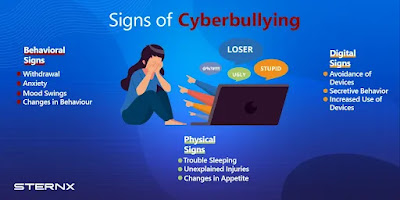Recognizing the Signs of Cyberbullying
Cyberbullying is a pervasive issue that can have serious consequences for students’ mental health and academic performance. It is essential for parents, teachers, and peers to recognize the signs of cyberbullying to intervene effectively and provide support.
1. Changes in Behavior: If a child suddenly becomes withdrawn, anxious, or depressed, it may indicate they are experiencing cyberbullying. Look for changes in their social interactions or a decline in academic performance.
2. Avoidance of Technology: A child who previously enjoyed using their devices may start to avoid them. They may express fear or anxiety about going online or using social media.
3. Physical Symptoms: Frequent headaches, stomachaches, or other unexplained physical ailments can be signs of emotional distress related to cyberbullying.
4. Changes in Sleep Patterns: Difficulty sleeping or nightmares can indicate that a child is experiencing stress or anxiety due to cyberbullying.
5. Withdrawal from Friends and Activities: If a child stops engaging with friends or participating in activities they once enjoyed, it may be a sign they are being bullied.
6. Secretive Behaviour: If a child becomes secretive about their online activities or suddenly changes their passwords, they may be trying to hide cyberbullying.
7. Unexplained Emotional Reactions: Look for signs of anger, frustration, or sadness that seem disproportionate to the situation. This may indicate that they are dealing with bullying online.
8. Decline in Academic Performance: A noticeable drop in grades or a lack of interest in schoolwork can be a sign that a child is preoccupied with issues related to cyberbullying.
9. Change in Online Presence: Increased use of social media, particularly if the child is engaging in negative interactions or experiencing online conflicts, can be a warning sign.
10. Increased Need for Privacy: If a child is suddenly very protective of their phone or computer, it may indicate they are dealing with cyberbullying. click this link to learn more
Video shows more signs of cyberbullying
References
Kowalski, R. M., Giumetti, G. W., & Schroeder, A. N. (2014). Bullying in the digital age: A critical review and meta-analysis of cyberbullying research among youth. Psychological Bulletin, 140(4), 1073–1137.
Hinduja, S., & Patchin, J. W. (2010). Bullying, cyberbullying, and suicide. Archives of Suicide Research, 14(3), 206–221.




Comments
Post a Comment